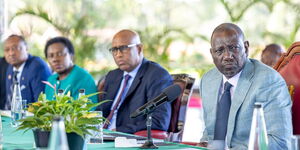The government is weighing in on the possibility of using aid from the International Monetary Fund (IMF) to settle loans advanced by the Chinese government after the latter declined to extend the settlement period.
Kenya had requested an extension of loan repayment from its lenders who are members of the G20 countries, with China being one of them.
The government sought a six-month extension to December 2021 but China declined the request.
If approved, the extension would see the government saved from paying Ksh50 billion to China.
The Chinese lenders were, however, uncomfortable with the request and asked the government to seek a way of making the payments.
The extension request was first made in January 2021, but China asked the Kenyan government to stop seeking loan holidays and meet its obligations.
The Kenyan government is now depending on the IMF aid to clear the loan. This means that the aid from the international lender will not be used to finance the budget as has been the case previously.
In a report by the Ministry of National Treasury and Planning, the government will use additional allocation of IMF reserves in Special Drawing Rights assets (SDR) to clear the loan.
SDRs can be used to settle foreign public debt, since they are the IMF's unit of exchange based on Sterling Pound, US Dollars, Euros, Yen and Yuan.
The Treasury has, therefore, resolved to take up this opportunity and curb, in every possible way, straining relations between them and the country's biggest lender.
In a recent interview, the Director General for Public Debt Management at the Treasury, Haron Sirima, said that Kenya has a variety of options, and using IMF aid is one of them.
“The Treasury has other options, including seeking grants from development partners, changing the funding for “specific” capital projects to Public Private Partnership (PPP) and tapping the IMF reserves,” Sirima remarked.












